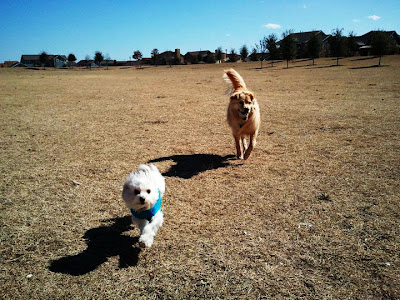 |
| Classic Kong |
With the slew of dog toys out there that claim
hours of fun and mental stimulation to occupy your dog, it's hard to know where to start. The Fundown (get it???) will be a series of dog toy product
reviews that will hopefully give you some insight in choosing where to spend your money. In addition, we've come up with some fun ways to vary the type of play your dog can get from just one toy!
Kongs - $7
 |
| Puppy Kong size S (5-10 lbs) |
 |
| Peanut butter face! |
Kongs are likely the most popular toy associated with boredom relief--and with good reason! They definitely keep a dog busy. What makes them so great is the versatility in which they can be used. Not only do they promote good chewing behavior, but they are also very durable (a good investment!). There are many ways to "make" a Kong for your
dog with varying degrees of difficulty. This is what provides the mental stimulation that so many toys aim to accomplish. Your dog's challenge, or his objective, is to figure out how to get the treat(s) that you've stuffed inside. In order from least to more expensive (as well as easiest to most challenging) you can:
dog with varying degrees of difficulty. This is what provides the mental stimulation that so many toys aim to accomplish. Your dog's challenge, or his objective, is to figure out how to get the treat(s) that you've stuffed inside. In order from least to more expensive (as well as easiest to most challenging) you can:
- Fill with peanut butter/chicken broth/bouillon. You can freeze this as a cold treat in the summer, to soothe a teething puppies' mouth, or just to increase the amount of time it will take to finish.
- Fill with kibble and seal the end with some peanut butter. (Freezable)
- Fill with an appropriately sized biscuit (like a Milkbone).
- Fill with a Kong Ziggy Chew (a stick-like chew designed specifically for the toy). $0.99 -$2 individually, better value in a pack.
- Fill with a variety of biscuits of different sizes and seal with Kong Stuff'in or peanut butter.
Feel free to mix it up! Try not start your new
puppy out with something too difficult, as he will give up and lose interest.
puppy out with something too difficult, as he will give up and lose interest.
Proper sizing is important as well. Don't let your puppy outgrow his Kong. This can lead to tearing
off chunks of rubber that can become a choking hazard.
off chunks of rubber that can become a choking hazard.



















